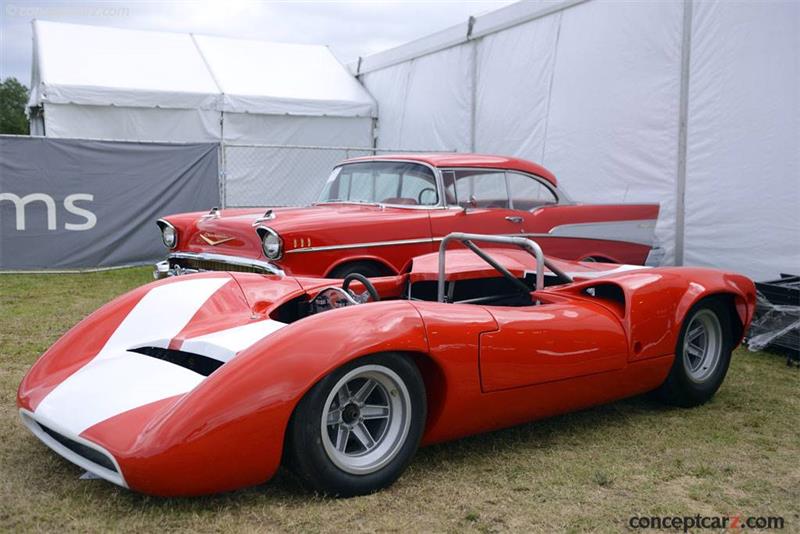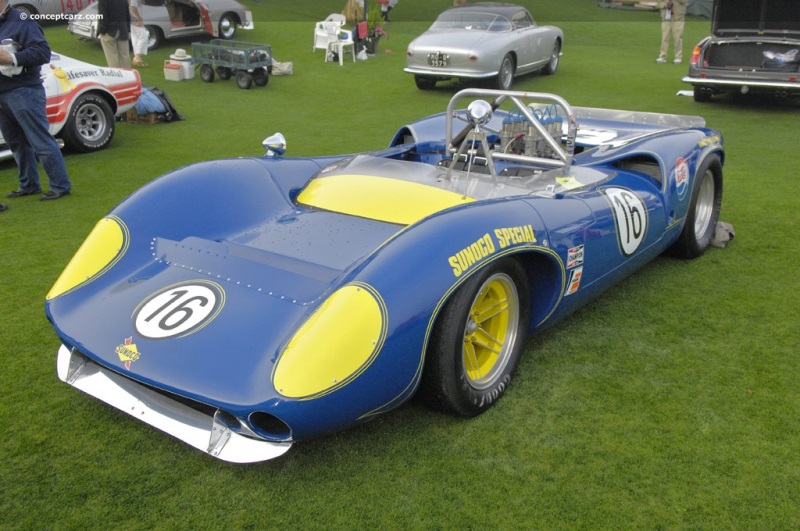British designer Eric Broadley created many racing cars for more than four decades at Lola Cars with the T70 being the most successful, winning races at numerous venues under a variety of regulations. It was introduced in 1965 and quickly demonstrated its performance and prowess in the capable hands of 1964 Formula One world champion John Surtees, who won the inaugural Can-Am Championship in 1966. The T70 series was produced in open MK II Spyder and MK III Coupe forms until 1968. 
Roadster
Chassis #: SL71/47
View info and history
Auction entries : 1With assistance from his cousin, Graham Broadley, Eric built a sports-racing car in 1958 powered by a Coventry Climax engine. It had an advanced tubular steel space frame chassis of his own design which helped it become a serious rival, in 1959, against the unbeatable Lotus Eleven. After an accident at Goodwood resulting in a hospital visit, Eric turned his attention away from driving and towards the design and fabrication of racing cars. By 1962, when Lola was still a young company, they began producing Formula 1 cars driven by legendary seven-times Motorcycle World Champion John Surtees, and in 1963 Broadley produced the compact, rear-engined Lola GT with American Ford V8 power to tackle the Le Mans 24-Hour race. The early Ford GT40 design was inspired by Broadley and his 1962 Lola Mk 6 GT sports-racing coupe, often regarded as the prototype Ford GT40. Thus, the Lola T70 of the mid-1960s shared several chassis design cues, including the monocoque structure and suspension, with the Ford GT40. Weight-saving design and construction were paramount, resulting in the steel and aluminum Lola being substantially lighter than the Ford. The chassis mainly consisted of an aluminum and steel sheet monocoque center section with side-mounted fuel cells, a front bulkhead to mount the suspension and steering and dual rear extensions for mounting the engine and rear suspension. The bodywork was smoothly rendered in fiberglass, the suspension was a conventional independent setup, and disc brakes located at all four corners (mounted inboard at the rear). The early examples were powered by a 4.5-liter Oldsmobile V8 engine with later examples being equipped with the more potent Ford and 5.9-liter Chevrolet V8s built by Traco Engineering. The engines were backed by the new Hewland LG 500 four-speed gearbox. 
Roadster
Chassis #: SL73-126
View info and historyThe T70 continued Broadley's tradition established by his initial series of Mark I cars, with its sleek and streamlined body design and well-proportioned stance. The initial Lola T70 Spyders contested contemporary FIA International Group 7 'unlimited-capacity sports-racing car' events, initially in the UK but very quickly within the USA. Despite being a successful enterprise, the works competition budget was limited, and the company was never able to field a formal works team. The racing program was led by the quasi-works Team Surtees organization, with input from drivers John Surtees and Jackie Stewart contributing to the T70's sleek design. The Lola-Chevrolet T70 driven by Surtees won the inaugural Can-Am race (at Mont-Tremblant Circuit), with further victories at Riverside and Stardust, resulting in the Championship title in 1966. The Mk2 T70 had a similar monocoque to the MK1, but instead of steel was comprised mostly of aluminum. Only the cross-bracing remained steel. Instead of welding, the sheets were riveted together which helped reduce weight even further. For the 1967 CanAm season, Bruce McLaren Motor Racing with the M6A won five of the six races, with John Surtees and Team Surtees winning at Stardust, the final event of the season. Surtees finished the season in third place behind Denny Hulme and Bruce McLaren. Mark Donohue and his Lola T70 MK.3B finished in fourth place. Both Surtees and Donohue had 16 points, but Surtees was ranked higher due to his first-place finish at Stardust. Lola chassis claimed six of the top eleven spots.
Coupe
Chassis #: SL71-32
View info and historyIn Europe, the sports car racing popularity was quickly growing in popularity, which led to the decision to cancel all Group 7 & 9 races for 1967. Broadley was forced to adapt the design of the T70 to comply with Group 6 endurance racing class. To compete in the Group 4 GT class, a minimum production of 50 cars was required to satisfy homologation requirements. Over the past two seasons, Broadley had sold 47 examples, which brought him desperately close to satisfying the 50 car minimum. A closed-cockpit Coupe Group 6 version emerged as the Aston Martin V8-engined Lola T70, however, the new Aston V-8 failed to prove its mettle at Le Mans. For the 1969 season, homologation requirements were lowered to twenty-five, which allowed the more modern Porsche 917 and Ferrari 512 to compete, often outpacing the older Lolas and Fords. In Europe, the Chevrolet powered coupes often suffered reliability issues due to the grade of fuel allowed. The T70 design would be further developed into 1968-69 with the T70 Mark III in both open Spyder and closed forms. Extensive wind-tunnel testing by Tony Southgate gave the new Mk 3 better aerodynamic properties than the GT40, which tended to display alarming lift at high speeds. On December 30th of 1968, the first example of the new MK IIIb was completed. The chassis, SL76/139, was sold to Roger Penske's team and made it racing debut at the 24 Hours of Daytona in February 1969, wearing blue Sunoco livery. The new T70 took the checkered flag, beating a slew of Porsche 908s failing to finish.
Roadster
Chassis #: SL75122
View info and history
Auction entries : 2The Lola T-70 MK IIIB had a close resemblance to the previous Mark III coupe in bodywork only. It was based on the T-160 CanAm car and called the III 'B' in order to obtain homologation. Over several seasons, the Lola T70s contested FIA World Championship and Can-Am endurance races, plus innumerable US Road Racing Championship, Nordic Cup and British and European Championship events. At the end of the T70 Mark III production, Franco Sbarro, an engineer and ex-crew chief of Scuderia Filipinetti who operated a race/prototype shop in Switzerland, acquired 10 Lola T70 Mk III chassis and constructed a number of cars that were intended for road use under the name of ACA (Atelier de Construction Automobile). Lola had several chassis and many suspension parts from the production of the previous model. Sbarro acquired these parts, and Broadley built seven original Lola chassis for Sbarro, with chassis numbers SL-101 through SL-107, with all but two of the cars receiving Chevy engines. It is not clear if all ten examples were built; at least five examples were constructed.
by Daniel Vaughan | Apr 2020
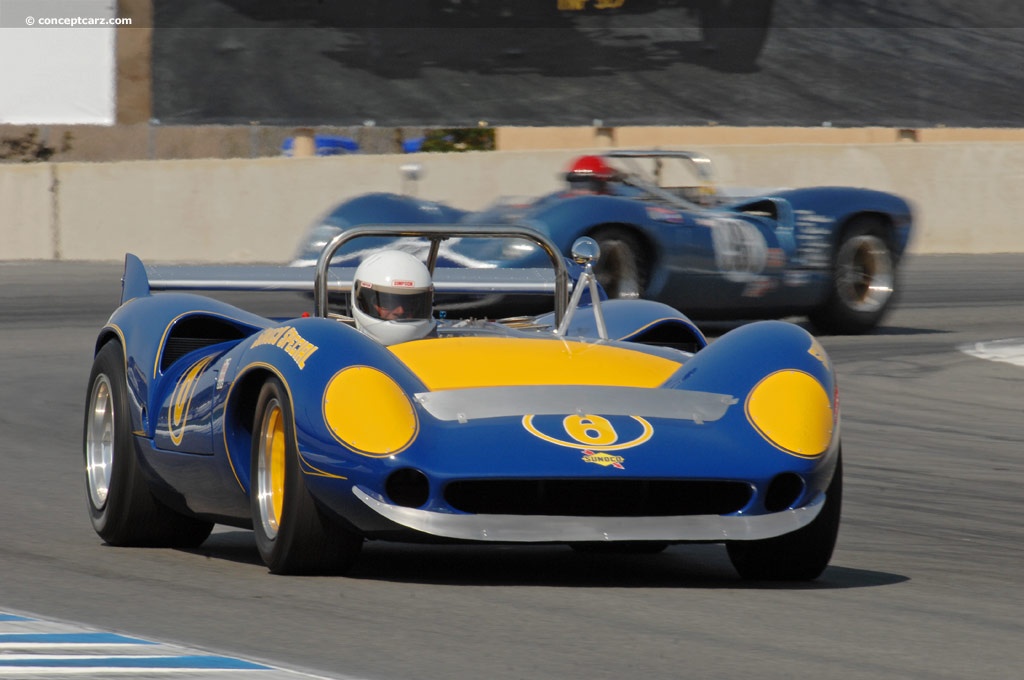
Roadster
Chassis #: SL71/47
View info and history
Auction entries : 1
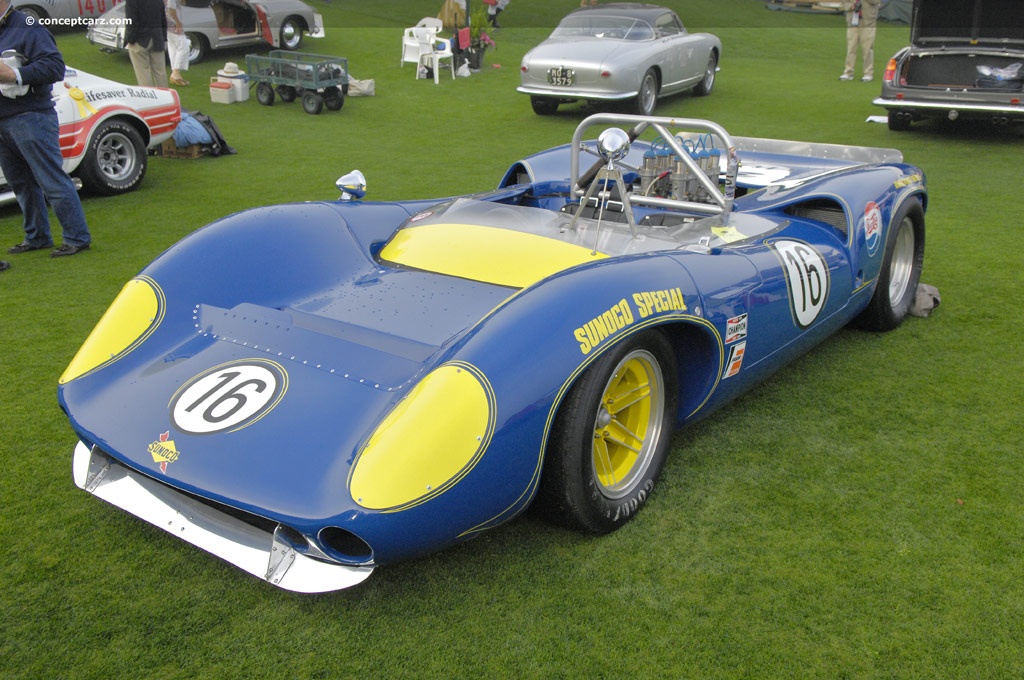
Roadster
Chassis #: SL73-126
View info and history
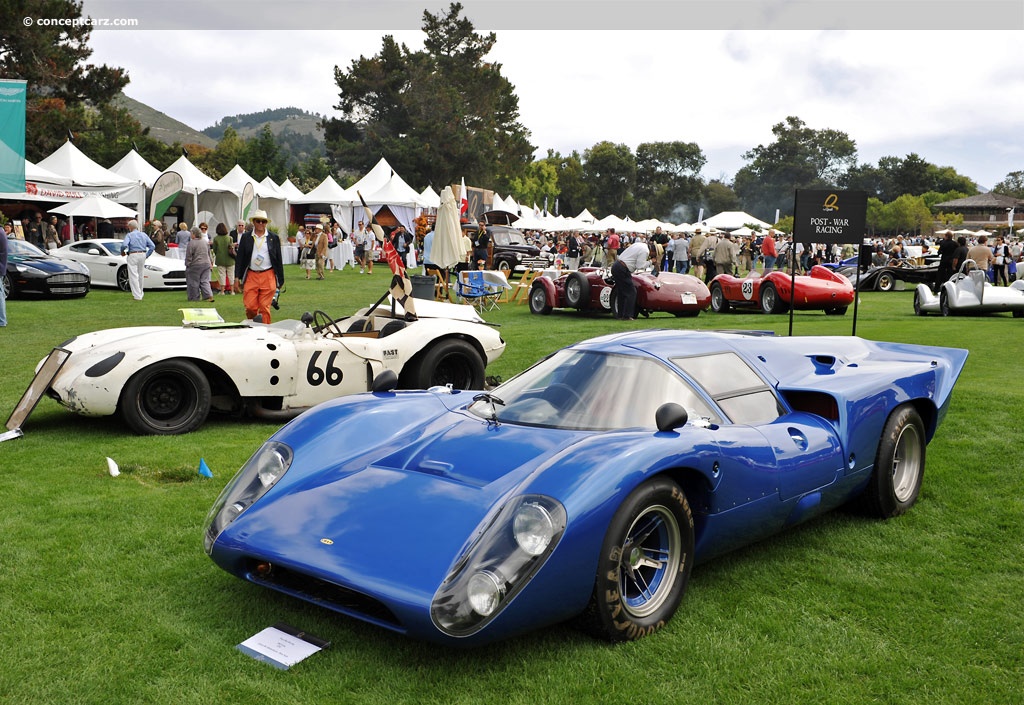
Coupe
Chassis #: SL71-32
View info and history
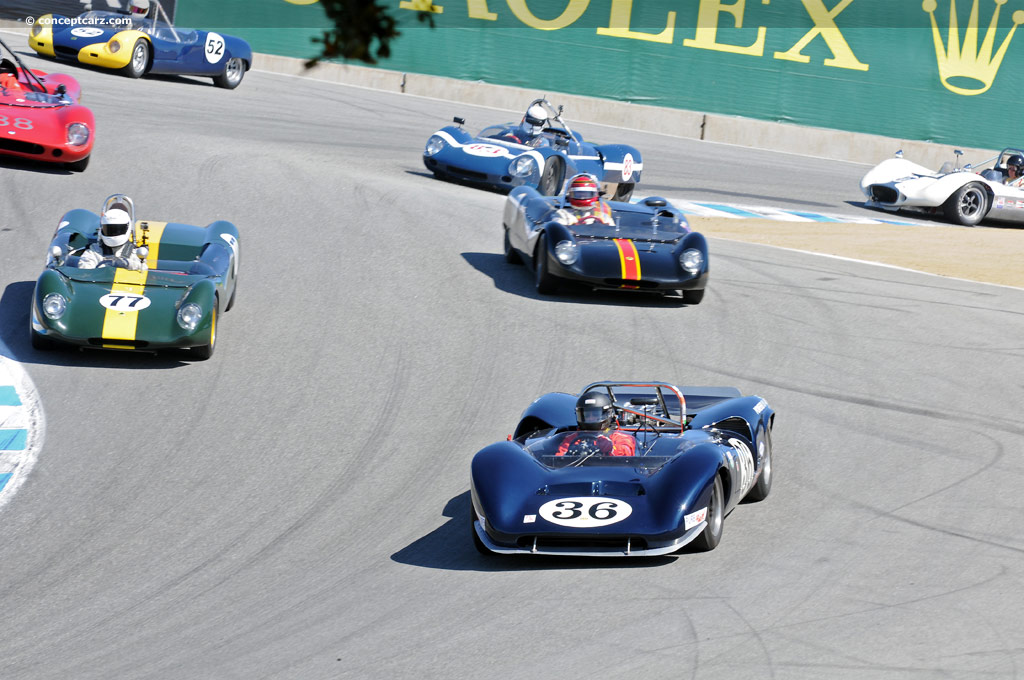
Roadster
Chassis #: SL75122
View info and history
Auction entries : 2
by Daniel Vaughan | Apr 2020
Related Reading : Lola T70 History
The Lola Racing Cars Group introduced the T70 in 1965 and during its lifetime, from 1965 through 1969, over 100 examples were produced in three versions. They were designed for endurance racing, incorporating excellent aerodynamics and flowing lines. The chassis was an aluminum monocoque structure that was both lightweight and rigid. The project was undertaken by Eric Broadley of Lola Cars with assistance....
Continue Reading >>
Continue Reading >>
1967 Lola T70 MKIII Vehicle Profiles
Recent Vehicle Additions
Related Automotive News

Can-Am History Roars Back to Life at Spring Classic May 19-21
The Can-Am Series made its last appearance at Mazda Raceway Laguna Seca at the 1973 Monterey Grand Prix. Vic Elford (10) in the UOP Shadow was chased through the Corkscrew by winner Mark Donohue (6) in the dominant Sunoco Porsche 91730.
MONTEREY,...
George Follmer to be honored by RRDC in Long Beach
HILLIARD, Ohio (March 2, 2016) - George Follmer, the only driver to have won both the Trans-Am and Can-Am championships in one year (1972), will be honored by the Road Racing Drivers Club at the RRDC Evening with George Follmer presented by Firestone...

Sonoma Historic Motorsports Festival Celebrates Can-Am at Sonoma Raceway
More than 350 vintage and historic race cars highlight May 17-18 weekend
George Follmer and Don Nichols are honored guests popular racing seminar set for third year
SONOMA, Calif. (May 7, 2014) - The Sonoma Historic Motorsports...
RRDC VOTES IN 37 NEW MEMBERS FOR 2013
HILLIARD, Ohio (Nov. 7, 2013) - Thirty-seven race-car drivers and motorsports professionals have been voted into the Road Racing Drivers Club in 2013. The group includes 13 Regular Members from the open-wheel and sports-car racing ranks, 20 Associate...

1967 Can-Am Road America: The Beginning of the 'Bruce and Denny Show'
While Formula One will be forever considered the pinnacle of motorsport, from a period between 1966 and 1986 there existed a series that would likely be the closest to anything goes as any motor racing series could truly get. Based upon the FIA Group...

















